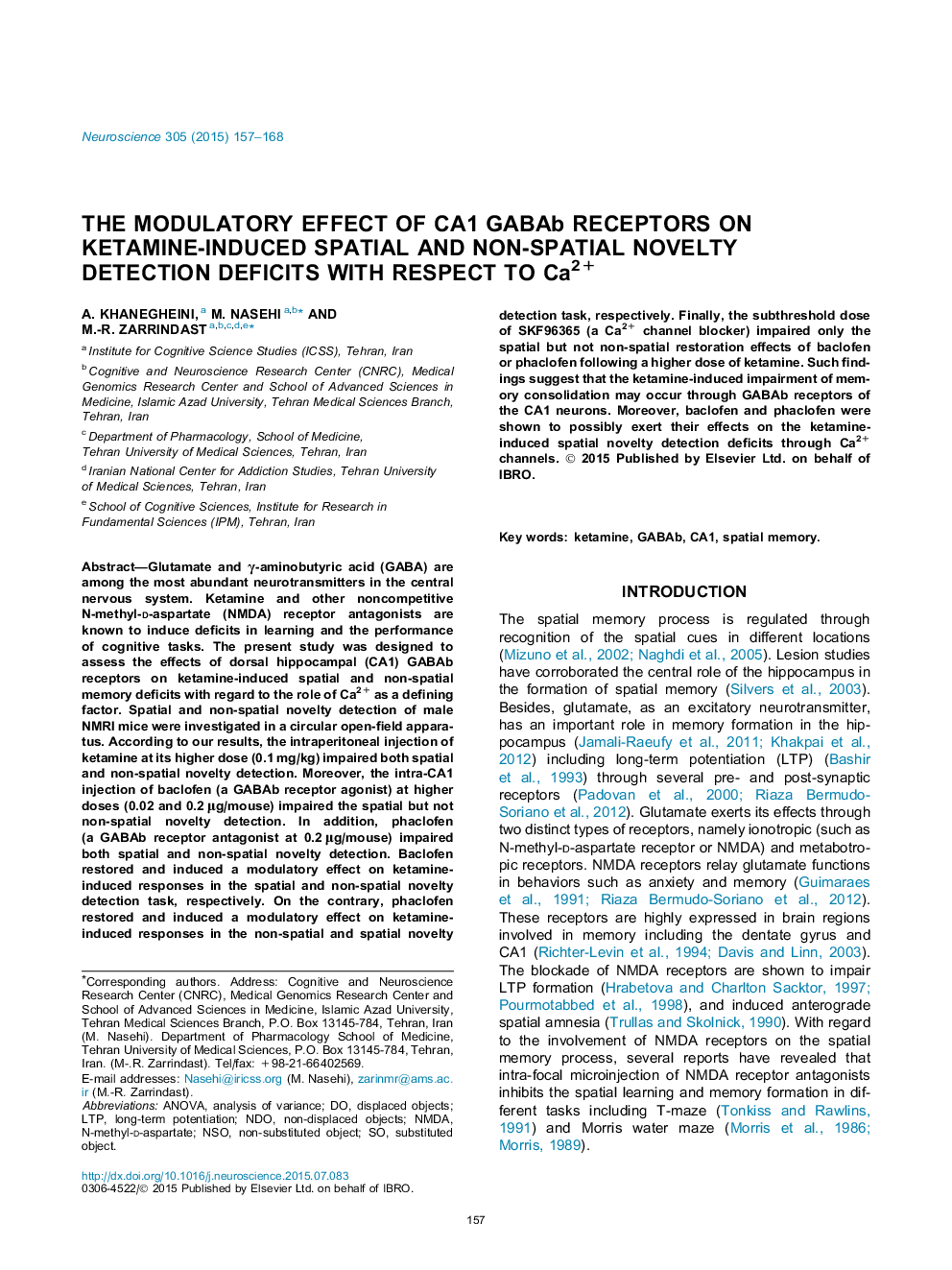| Article ID | Journal | Published Year | Pages | File Type |
|---|---|---|---|---|
| 6272231 | Neuroscience | 2015 | 12 Pages |
â¢Ketamine and phaclofen impaired both spatial and non-spatial novelty detection.â¢Baclofen impairs spatial but not non-spatial novelty detection.â¢Baclofen restored spatial and modulating effect on non-spatial ketamine responses.â¢Phaclofen restored non-spatial and modulating effect on spatial ketamine responses.â¢SKF96365 abolished spatial restoration effect by baclofen/phaclofen with ketamine.
Glutamate and γ-aminobutyric acid (GABA) are among the most abundant neurotransmitters in the central nervous system. Ketamine and other noncompetitive N-methyl-d-aspartate (NMDA) receptor antagonists are known to induce deficits in learning and the performance of cognitive tasks. The present study was designed to assess the effects of dorsal hippocampal (CA1) GABAb receptors on ketamine-induced spatial and non-spatial memory deficits with regard to the role of Ca2+ as a defining factor. Spatial and non-spatial novelty detection of male NMRI mice were investigated in a circular open-field apparatus. According to our results, the intraperitoneal injection of ketamine at its higher dose (0.1 mg/kg) impaired both spatial and non-spatial novelty detection. Moreover, the intra-CA1 injection of baclofen (a GABAb receptor agonist) at higher doses (0.02 and 0.2 μg/mouse) impaired the spatial but not non-spatial novelty detection. In addition, phaclofen (a GABAb receptor antagonist at 0.2 μg/mouse) impaired both spatial and non-spatial novelty detection. Baclofen restored and induced a modulatory effect on ketamine-induced responses in the spatial and non-spatial novelty detection task, respectively. On the contrary, phaclofen restored and induced a modulatory effect on ketamine-induced responses in the non-spatial and spatial novelty detection task, respectively. Finally, the subthreshold dose of SKF96365 (a Ca2+ channel blocker) impaired only the spatial but not non-spatial restoration effects of baclofen or phaclofen following a higher dose of ketamine. Such findings suggest that the ketamine-induced impairment of memory consolidation may occur through GABAb receptors of the CA1 neurons. Moreover, baclofen and phaclofen were shown to possibly exert their effects on the ketamine-induced spatial novelty detection deficits through Ca2+ channels.
